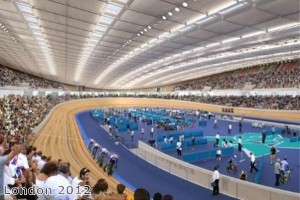How the Olympics can fight a moth epidemic with sustainable lighting
How the Olympics can fight a moth epidemic with sustainable lighting
It costs a lot to fly a load of Lycra-clad athletes over to the UK, dump them in a flash new stadium and carry a gold-plated torch around them - about £11 billion, according to reports.
But despite the massive public spend that's gone on hosting the London 2012 Olympics, there is at least one arena in which the planning committees are looking to cut costs - by making it the most sustainable and eco-friendly Games yet.
According to the Responding to Climate Change group (RTCC), everything from the architecture behind the stadium designs to the switches and sockets installed in the Olympic Village have been considered with sustainability in mind.
"Some 98 per cent of the materials from the [Olympic Park's] demolished buildings, including glue factories, a chemical works and an oil refinery, were re-used and 700,000 cubic metres of soil, enough to fill two billion cans of Coke, were cleansed to be re-claimed," said the group.
And the south London Velodrome - set aside for the cycling events - is designed with natural ventilation and lighting sources in mind, minimising the need to install energy-hungry air-conditioning and lighting solutions.
The works prove that large commercial buildings as well as residential homes can make significant savings by switching to more energy-efficiency lighting measures such as LED lighting, felt both in the cost-to-build and the ensuing energy bills over the course of the building's lifespan.
And there's another advantage to LED lighting that comes in handy during the summer months - the bulbs are less likely to attract moths and bugs than traditional incandescents.
While they don't repell them entirely, LED bulbs are less attractive to pests such as moths - useful for Olympic athletes situated in Stratford, which is reported by pest prevention firm Caraselledirect to be the moth epicentre of London.

